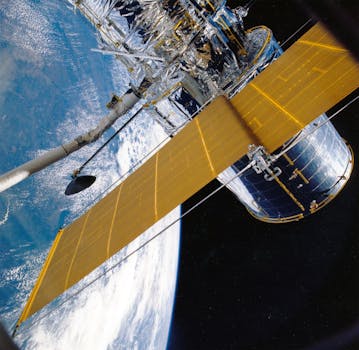
The Future of Satellites: Revolutionizing Global Connectivity
The future of satellites is rapidly evolving, with advancements in space technology and increasing demand for global connectivity. As we continue to rely on satellite communications for various applications, from navigation and weather forecasting to television broadcasting and internet access, the industry is poised for significant growth and transformation.
One of the key drivers of this growth is the development of new satellite constellations, such as those being launched by companies like SpaceX and OneWeb. These constellations consist of hundreds or even thousands of small satellites that work together to provide high-speed internet access to remote and underserved areas around the world. This has the potential to revolutionize the way we communicate and access information, particularly in areas where traditional telecommunications infrastructure is lacking.
Another significant trend in the satellite industry is the increasing use of advanced materials and technologies, such as 3D printing and artificial intelligence. These innovations are enabling the development of lighter, more efficient, and more cost-effective satellites that can be produced and launched more quickly than ever before. This, in turn, is opening up new opportunities for companies and organizations to access space and participate in the global satellite market.
In addition to these technological advancements, there are also important regulatory and policy developments that are shaping the future of the satellite industry. For example, the Federal Communications Commission (FCC) has recently implemented new rules and guidelines for the deployment of satellite constellations, and international organizations such as the International Telecommunication Union (ITU) are working to establish global standards and protocols for satellite communications.
As the satellite industry continues to evolve, it is likely that we will see significant improvements in the performance, efficiency, and cost-effectiveness of satellite communications. This, in turn, is likely to drive further growth and innovation in the industry, as well as increased adoption and use of satellite technologies in a wide range of applications. From remote sensing and earth observation to telecommunications and navigation, the future of satellites is set to be an exciting and rapidly changing landscape.
Furthermore, the future of satellites will also be shaped by the growing demand for satellite-based services, such as satellite broadband, satellite navigation, and satellite-based earth observation. As the world becomes increasingly dependent on satellite communications, the industry will need to continue to innovate and adapt to meet the changing needs of users and stakeholders.
In conclusion, the future of satellites is a rapidly evolving and dynamic landscape, driven by technological innovation, regulatory developments, and growing demand for satellite-based services. As the industry continues to grow and transform, it is likely that we will see significant improvements in the performance, efficiency, and cost-effectiveness of satellite communications, as well as increased adoption and use of satellite technologies in a wide range of applications.

